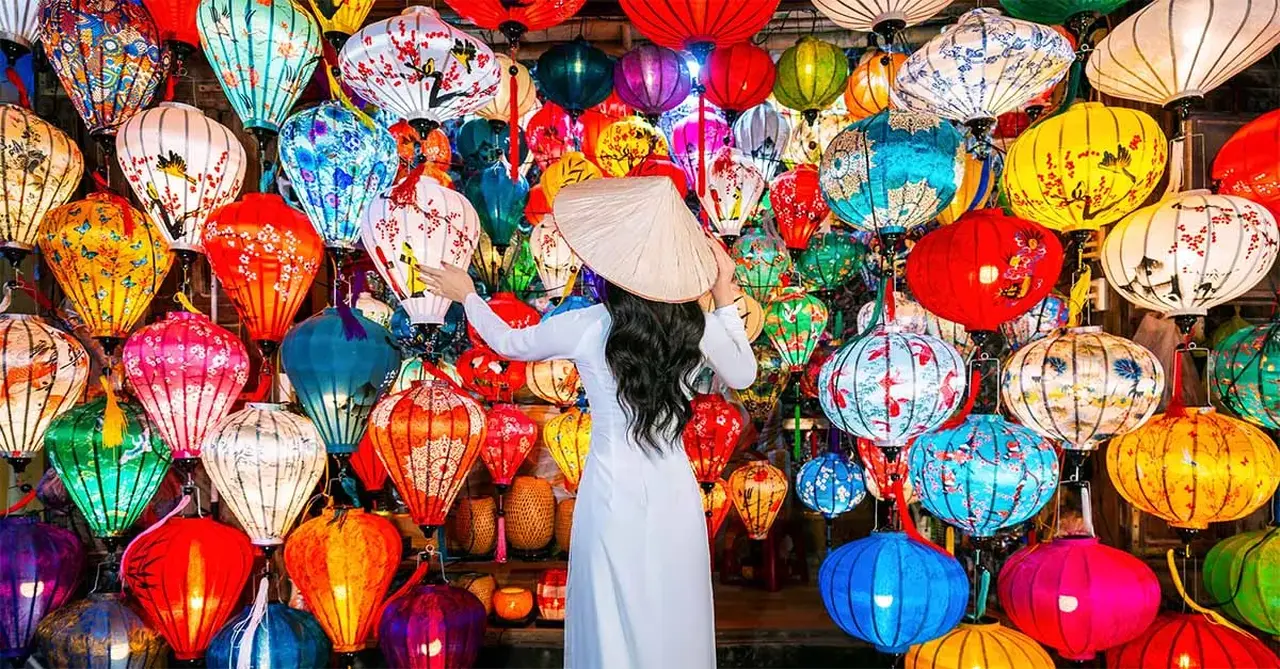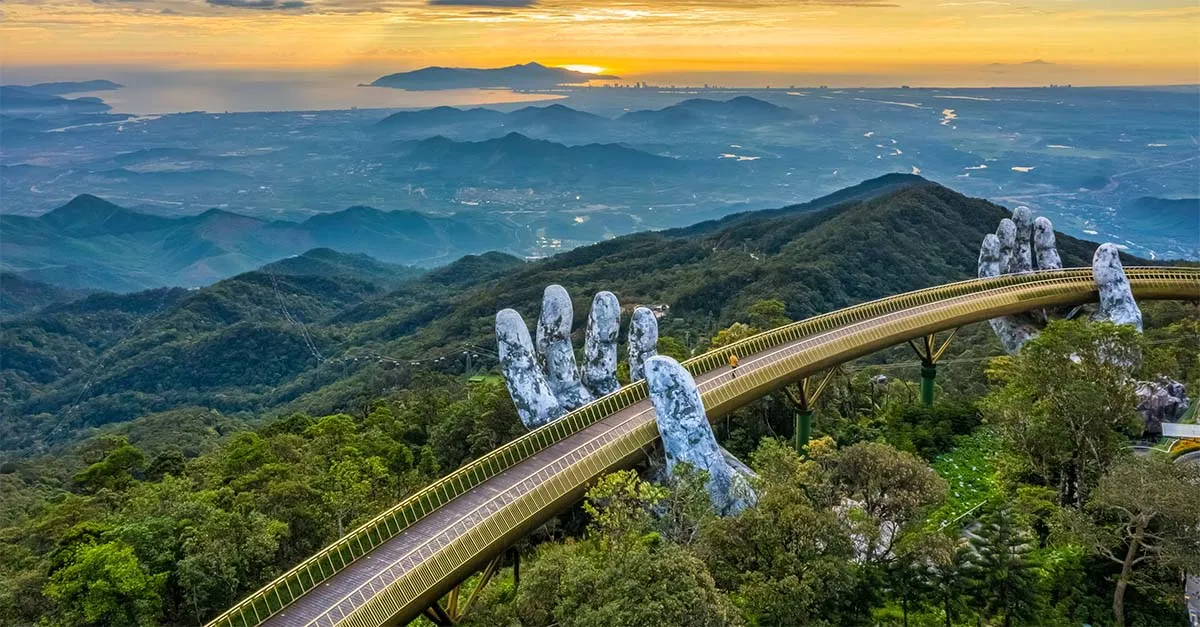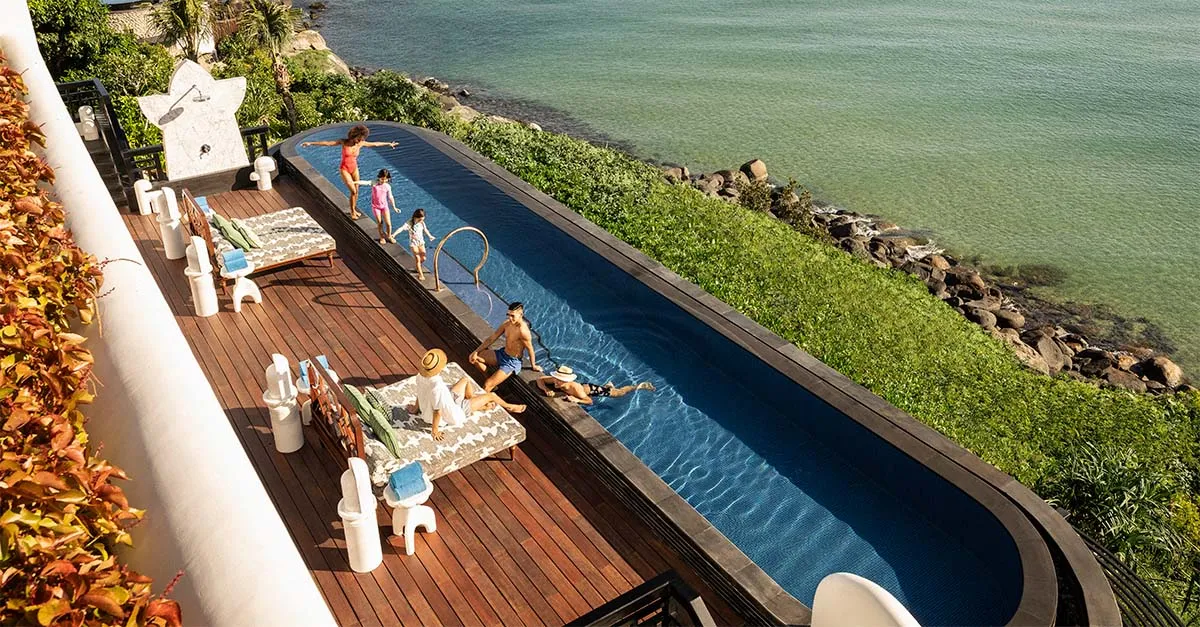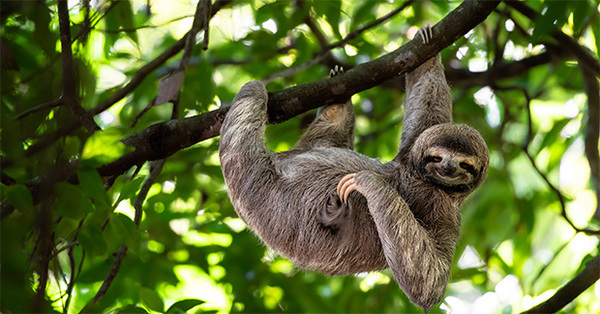You are viewing 1 of your 2 free articles
3 of the best cities to visit in Vietnam
Here’s why these less-visited Vietnamese cities deserve their moment in the sun
Click here to download and save as a PDF
Visitors to Vietnam are increasingly venturing beyond big-hitters such as Ho Chi Minh City and Hanoi, and many are drawn to the cities of the south-central coast.
Hoi An, Da Nang and Hue are three cities that are easily combined, but all have their own unique identity. We find out what sets each one apart.
Da Nang
The Golden Bridge, near Da Nang. Image credit: Shutterstock/Hien Phung Tu
Da Nang is more developed than its neighbours, but those who arrive here – its airport is often the main entry point for anyone heading to Hue, to the north, or Hoi An, to the south – often extend their stay.
The InterContinental Da Nang Sun Peninsula Resort. Image credit: Yeo Eng Hwee
My Khe Beach, the most popular stretch of sand and the location for the Nobu Danang when it opens in 2026, might well have a backdrop of skyscrapers as well as palm trees, but the soundtrack of construction work is a reminder that change is afoot.
“Da Nang has emerged as a symbol of modern vibrancy, but it’s one which maintains its traditional charm,” says Adam Leonard, who moved here in 2024 to become director of sales and marketing at the InterContinental Danang Sun Peninsula Resort. “Explore beyond the lights of its nightclubs and jazz bars and you’ll find ancient architecture and wartime coffee shops. It’s a place that offers a true taste of Vietnam.”
In the city centre, the biggest crowd-pullers include the Museum of Cham Sculpture, which focuses on the Chams, a seafaring Vietnamese ethnic group that traces its roots to the fourth century.
The lemon-yellow building, designed by French architects, houses the world’s biggest collection of Cham sculptures, including the Tra Kieu Pedestal, a huge, ornate altar featuring symbolic images such as Apsara dancers.
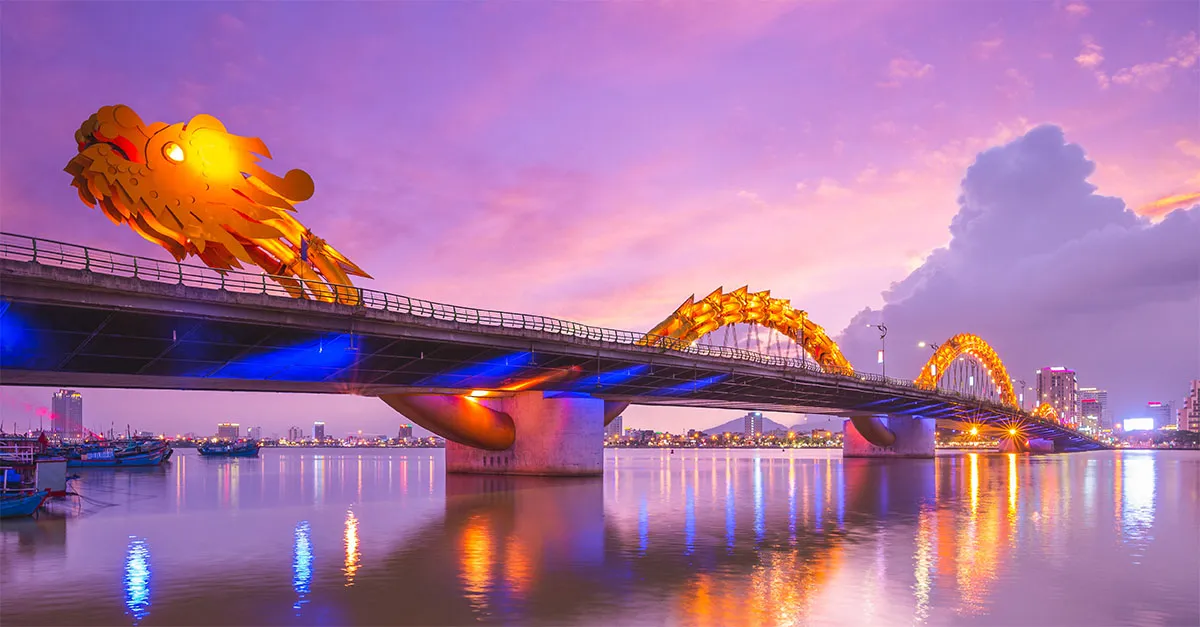
Dragon Bridge, Da Nang. Image credit: Shutterstock/Richie Chan
Da Nang is known for its striking architecture. At the weekend, Dragon Bridge, a dragon-shaped overpass spanning the River Han, breathes clouds of hot fire during sunset light shows.
Clients who enjoy riverside walks should also consider a stroll along nearby Bach Dang, the city’s first night-time ‘walking street’. Unveiled in 2024, this pedestrianised thoroughfare opens from 3pm to midnight and stretches from Dragon Bridge to Tran Thi Ly Bridge. It’s lined with stalls selling everything from street food to local crafts.
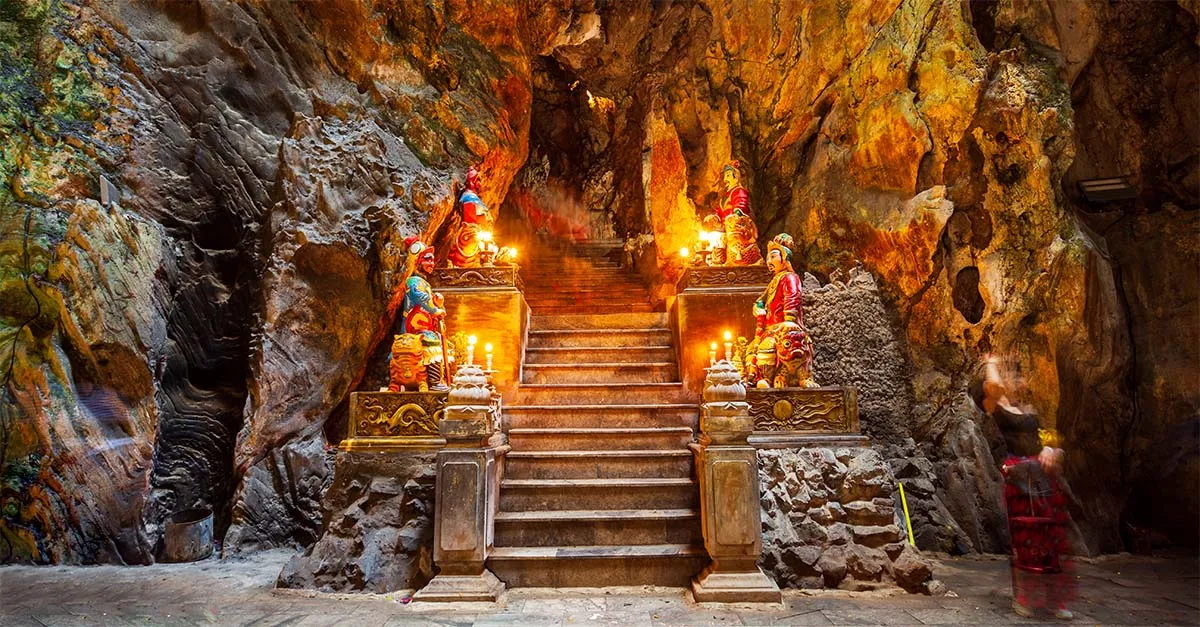
A cave in the Marble Mountains. Image credit: Shutterstock/saiko3p
No visit to Da Nang is complete without an exploration of the Marble Mountains – five limestone peaks four miles to the south.
Home to caves and temples carved by Nguyen Dynasty kings, its highlights include Huyen Khong cave, which was a Viet Cong hideout during the Vietnam War and is now a popular spot for selfie-snappers, who pose in circles of sunlight created by shafts of light piercing the cave’s shattered ceiling. The Linh Ung Pagoda, surrounded by monkey-topped ceremonial halls and sculpture gardens 640m above sea level, is a great spot to soak up views over the coastline.

Image credit: Shutterstock/Nguyen Thi Quynh Chau
Da Nang is getting greener too – there are plans for beachfront parks in its centre, as well as in the Son Tra District. This peninsula, to the city centre’s north, is known for its wildlife, and critically endangered red-shanked douc langur monkeys are regularly spotted here.
The peninsula is also home to beautiful beaches and Da Nang’s most luxurious hotel – the InterContinental Danang Sun Peninsula Resort. Designed by American architect Bill Bensley, it’s home to the city’s first Michelin-starred restaurant, La Maison 1888.
Hoi An
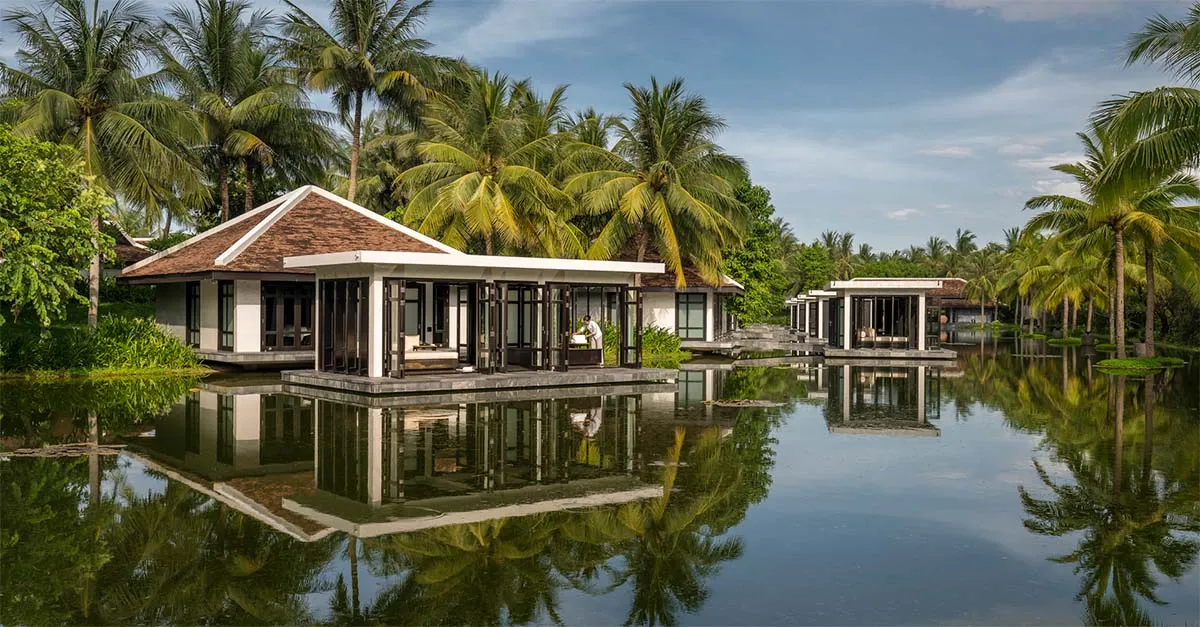
Four Seasons Resort The Nam Hai, Hoi An
A small city 17 miles south of Da Nang, Hoi An is famous for its ancient canals and rich history.
Its Unesco World Heritage designation was awarded due to its status as an “exceptionally well-preserved example of a southeast Asian trading port”.
Most visitors make a beeline for its historic centre, where pastel-hued, greenery-draped buildings date back to the 1500s and reflect Chinese, Vietnamese and European architectural styles. Today, many of its inhabitants are Chinese descendants of the traders who shaped this city, building structures that have been carefully preserved and opened to the public: dragonadorned assembly halls and squat wooden houses topped with rainbow-hued glazed tiles.
The sheer number of historic buildings in its old town can seem overwhelming, but this is where the Hoi An Old Town ticket comes in.
For about £3.40, visitors can purchase a pass providing access to a choice of five historic buildings out of a list of 22; payment must be made in cash and contributes to the preservation of the city’s heritage.
Perhaps unsurprisingly, given Hoi An’s compact size, many visitors base themselves in Da Nang, though with several new hotels popping up here recently, there are more options to stay in the city. These include the Moire Hoi An, Vignette Collection, a 128-room property that opened in December.
Clients craving luxury should consider the beachfront Four Seasons Resort The Nam Hai, Hoi An, which is four miles south of the city centre. With its huge spa – treatment pavilions sit above a lake – it’s perfect for those seeking R&R, and also hosts practitioners specialising in different aspects of wellbeing.
Hue
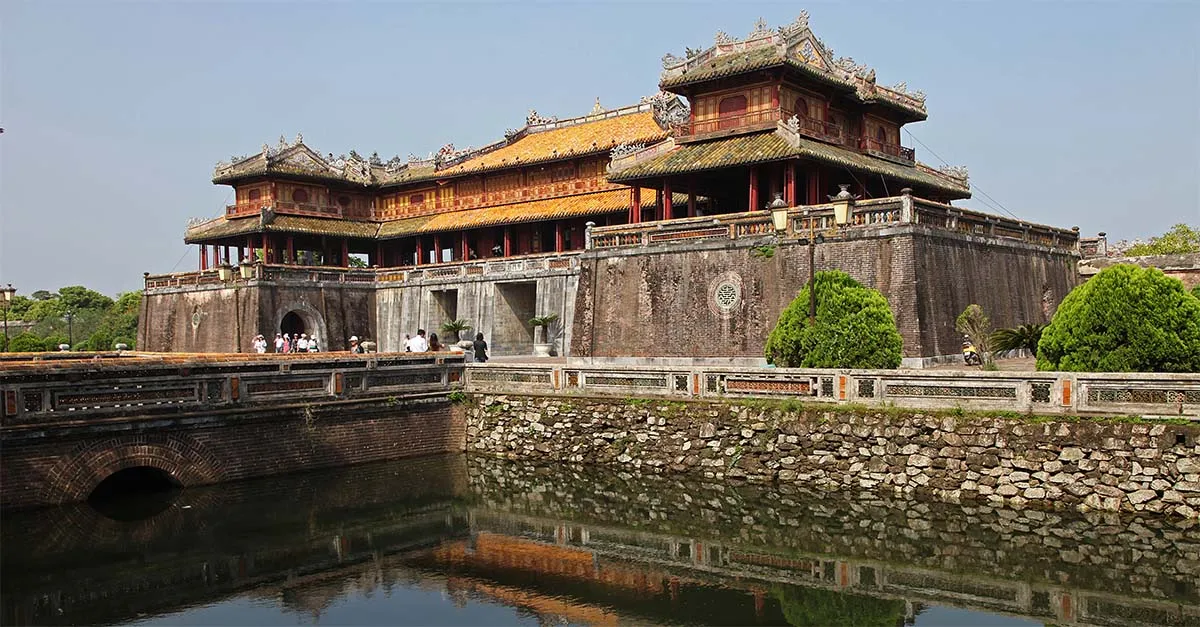
The Imperial City, Hue. Image credit: Shutterstock/Stephen Chung
Hue (pronounced ‘Hway’) is easily accessible from Da Nang. Clients can opt for a two-and-ahalf-hour train journey or a spectacular two-hour road trip past mist-topped hills and stunning beaches; one-way taxi fares cost about £45.
It’s also a popular stop-off for river cruises, including itineraries with Wendy Wu Tours.
In many ways, this riverside city blends Da Nang and Hoi An’s best bits – its centre is packed with beautifully preserved heritage buildings, but it has also evolved to cope with the growing numbers of tourists flocking to its Unesco-listed monuments. Recently opened hotels include the Best Western Premier Sky Hue and the Kobi Onsen Resort Hue, a local property ‘affiliated’ to the Meliá group.
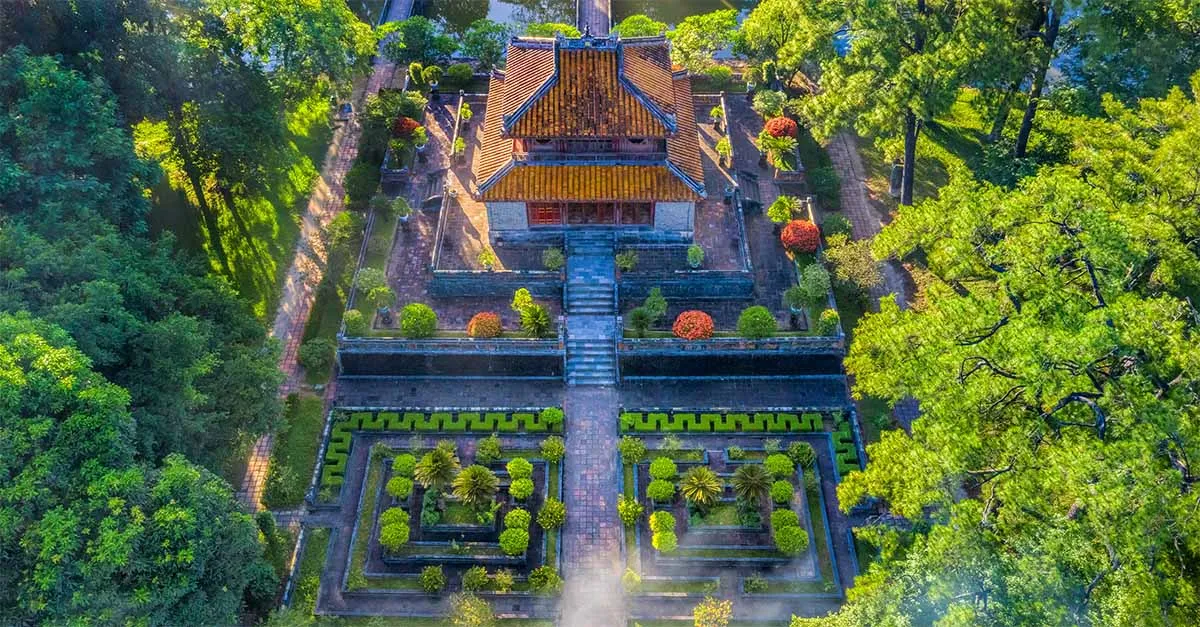
The Forbidden Purple City, Hue. Image credit: Shutterstock/Hien Phung Thu
The star of the show is the Forbidden Purple City, built in the early 1800s following the ascension to the throne of the first Emperor of the Nguyen Dynasty. It’s at the heart of the Imperial City, a citadel filled with listed monuments.
Visitors enter the Forbidden Purple City via a gate on the citadel’s southern side (and given that its moated perimeter wall is more than one and a half miles long, mistaking an exit for an entrance can be time-consuming). Clients will need at least a couple of hours to explore this complex of palaces, temples and courtyards, once used exclusively by emperors and their families. Decent walking shoes are essential.
Recently, there’s been increased investment in renovations, as well as in activities for tourists.
For about £5.50, visitors to the Forbidden Purple City can pose on a replica throne flanked by servants, or hire Nguyen Dynasty-style outfits to wear as they explore the site. A VR experience was also added last year, which allows visitors to play an archery-based game that dates from the Nguyen Dynasty.
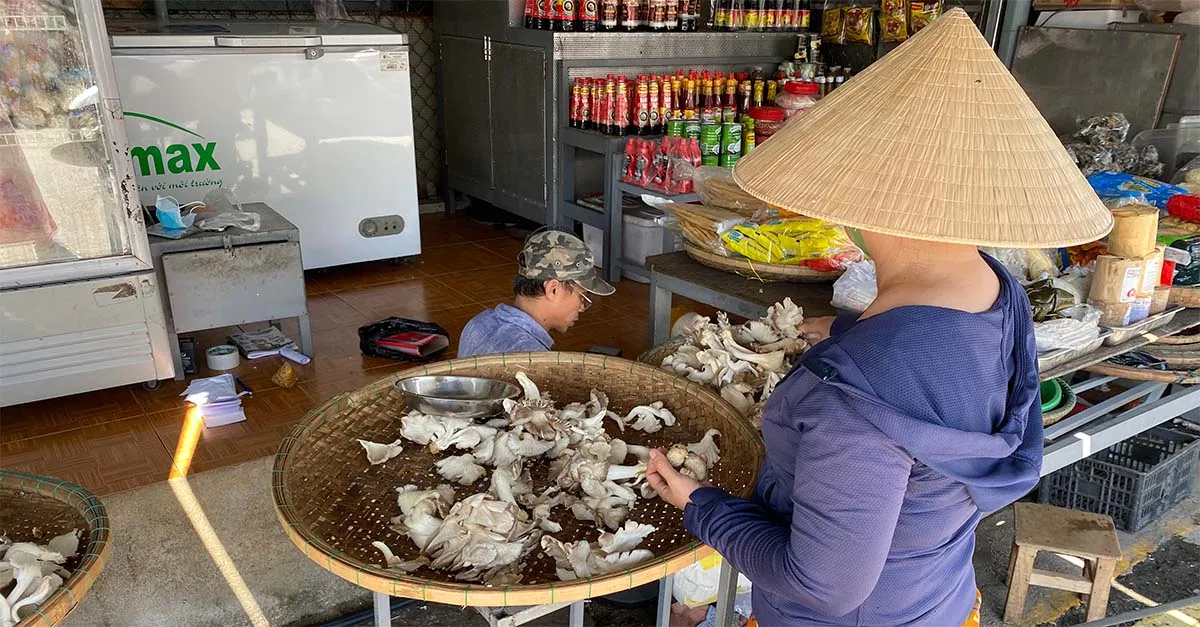
A market in Hue. Image credit: Tamara Hinson
Exploring farther afield in Hue, often overlooked landmarks include the octagonal Thien Mu Pagoda, built in the 1600s, and Dong Ba Market, which dates back to the 1700s and is next to the city’s Trang Tien Bridge. It’s colourful and chaotic, and a great place to gain an insight into local life – as well as a brilliant spot to pick up souvenirs, including nón lá, the traditional conical hats. Although how your clients will squeeze these into their suitcases is anyone’s guess.
Book it
Intrepid Travel’s 12-day Vietnam Real Food Adventure travels from Hanoi to Ho Chi Minh City, via Hue, Da Nang and Hoi An. Prices start at £1,616 for a November 9 departure, including accommodation, domestic travel, activities and some meals, but excluding international flights.
intrepidtravel.com
Luxury Gold’s 12-day Spirit of Vietnam smallgroup itinerary includes visits to Hue and Hoi An as well as Hanoi, Halong Bay and Ho Chi Minh City. Prices lead in at £4,625 for a November 1, 2026, departure, including hotel accommodation, transfers, taxes and tips, most meals and Wi-Fi. International fights are extra.
luxurygold.com
Ask the expert

Jo Reeve, general manager UK & Ireland, Intrepid Travel
“Travellers are increasingly seeking more culturally enriching experiences beyond Hanoi and Ho Chi Minh City. Hoi An, Hue (pictured below) and Da Nang offer a rich history, beautiful landscapes and authentic local charm, making them an attractive alternative to larger urban hubs. Additionally, new direct flight routes from the UK with Vietnam Airlines make these destinations more accessible than ever.”
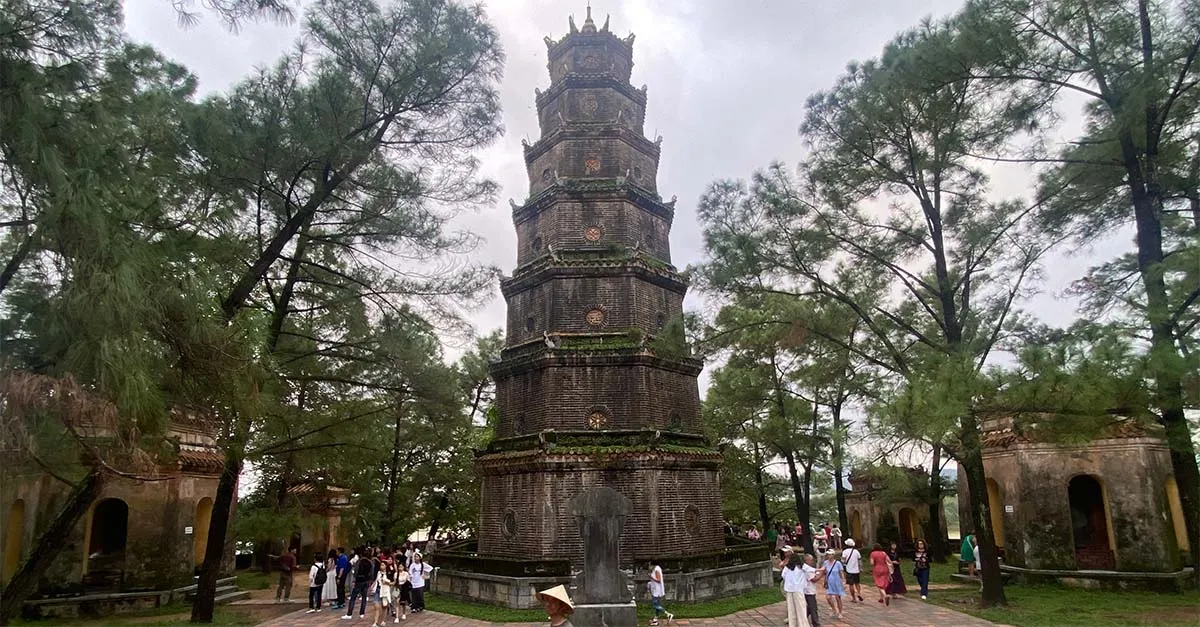
Thien Mu pagoda, Hue. Image credit: Tamara Hinson
Lead image credit: Shutterstock/Guitar photographer

